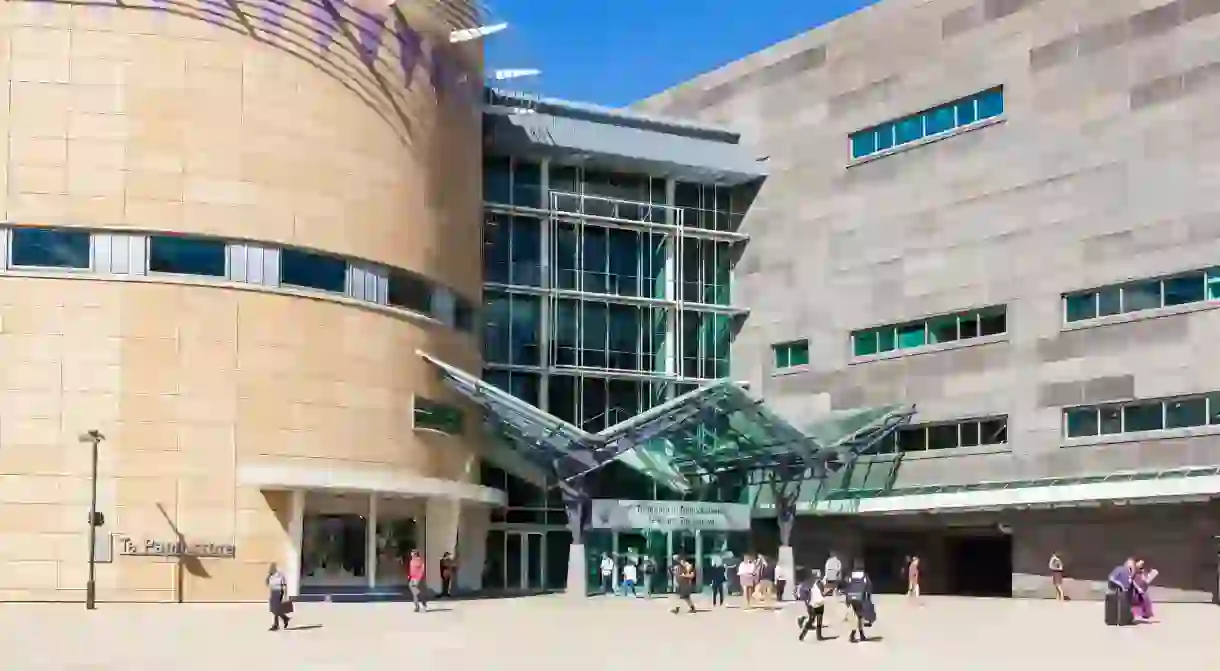Te Papa Tongarewa: Celebrating New Zealand Culture

One of the largest museums in the world, Te Papa Tongarewa is the national museum and art gallery of New Zealand. The museum is renowned for its use of advanced technology to display the multi-faceted aspects of New Zealand’s cultural and natural histories. We take a look at this vast institution, and the ways in which it exhibits a comprehensive collection of artefacts and information on New Zealand and its heritage.
Meaning “our place” in Māori, Te Papa Tongarewa aims to be a multicultural venue within which the public can engage with the history of New Zealand’s arts, culture and physical beginnings. The museum achieves this by arranging its vast and ever-changing collection into five specific areas: art, history, Pacific, Māori and natural environment, and also organises educational programmes and schemes on top of its interactive exhibitions.
The museum is community-driven, aiming to celebrate the diversity of New Zealand’s population and to portray it with reverence. This is particularly evident in its ongoing exhibition, Passports: a collection which outlines the many different nationalities which have migrated to the country. The exhibit is adapted roughly every two years in order to give each community the chance to display its respective histories, but it takes on a particularly meaningful role on World Refugee Day, during which the museum holds a variety of events, enabling young refugees to tell their stories through a myriad of artistic mediums, including art and poetry.
Displaying New Zealand’s incredible wealth of history over five storeys, the museum itself dates back to 1865, when its predecessor, the Colonial Museum, opened its doors. The logo of the museum – a thumbprint – further emphasises the institution’s focus on cultural heritage. In addition to showing the country’s influence from communities across the globe, some of the most prominent displays within Te Papa focus on New Zealand’s indigenous people, the Māori.
By giving detailed information about key Māori figures through history – such as the first Māori king, different tribes, authentic newspapers and detailed diaries – the museum makes each visitor aware of New Zealand’s unique background and the ways in which the Māori explored the Pacific and created the first settlements.
The museum not only shows how New Zealand has developed culturally, but also how it has physically evolved through the years. Using advanced motion-sensor technology, you are shown the beginnings of this beautiful landscape from prehistoric times and how its horizons and natural habitats were created.
Carefully organised and displayed, the museum is home to the biggest and most extensive collection of plants and animals from the lands that make up this archipelago. With the country boasting such a vibrant natural habitat, there are regular ongoing discoveries of new species, and the national museum plays an integral role in the identification and organisation of each one.
The museum also houses an impressive collection of visual art. The National Collection was established in 1905, at first maintaining a focus on British art, but eventually obtaining works which represent the many creative feats of New Zealand artists themselves. Today, pieces from all the traditional visual arts can be seen, with a recent increase in contemporary commercial design.
The building itself has also received international acclaim for its innovative architectural design, with much of the interior using New Zealand-grown wood. The structure sits on 150 shock absorbers, an ingenious design that ensures the safety of visitors inside during even the most violent of earthquakes.
Celebrated both internationally and across Aotearoa (the Māori word for New Zealand), Te Papa targets the core principles of learning, understanding and encouraging sincere relationships with local communities, displaying New Zealand’s diversity by providing an array of viewpoints.













